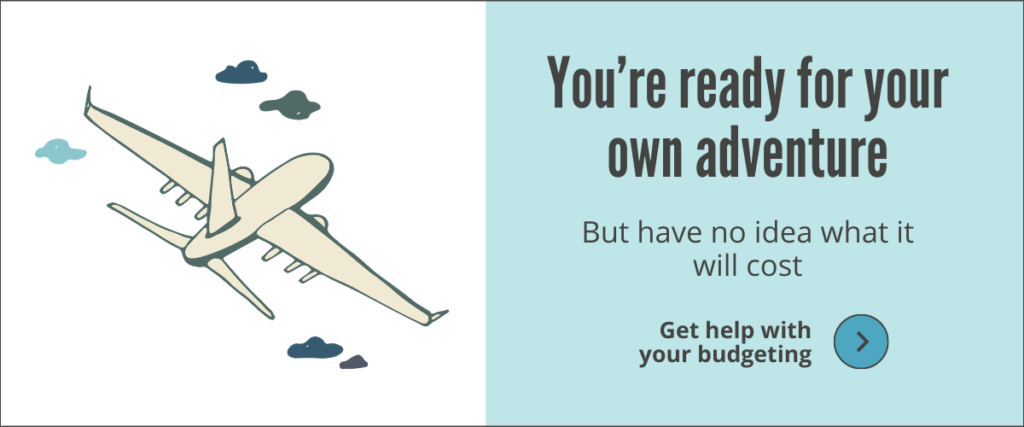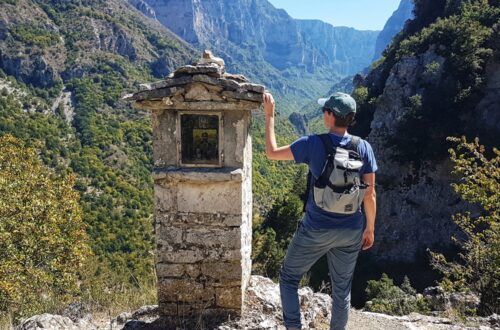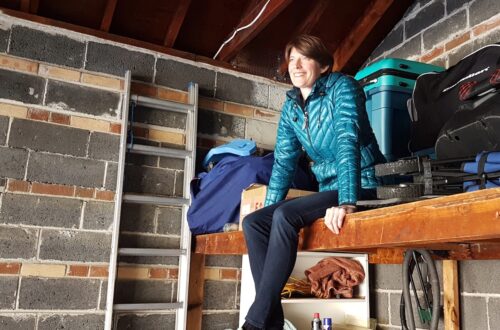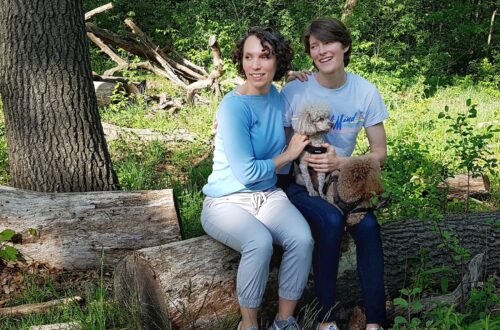
5 Crucial Lessons About Full-Time Travel That You Need to Know
When we set off from Singapore four years ago, we never could have predicted what our journey around the world would look like. We’ve been lost in a vast coffee plantation in Colombia, chased by stray dogs in Romania, dangled in a rusty gondola over a valley in Ecuador — and that’s just in the past year.
Our adventures have mostly been a lot of misadventures but that’s what travel really is. Of course, travel still provides those wonderful, unforgettable moments: we’ve overnighted in a castle in the Czech Republic; released a baby turtle in Mexico; explored ancient ruins in Turkey without another tourist in sight. But for every one of those special moments, we’ve experienced hundreds of challenges, mishaps and frustrations.
Although we’d prefer to bury our mistakes and never speak of them again, we’ve turned them into a series of lessons for the would-be full-time traveler. Essentially, we’ve taken everything we’ve done wrong over the past four years and we’re sharing it all.
These are the topics that rarely get discussed in blogs or vlogs. Sure, there are a lot of resources out there about how to pack or book flights or buy insurance for a trip around the world. But there’s not much discussion about combating loneliness on the road or burnout or boredom (that’s right, it’s possible to be in the most beautiful, exciting destination in the world and still get bored).
And we’re starting with the lesson that seems to be the most mundane but is actually incredibly important for full-time travelers.

The weather really matters
By now we’ve gotten much better at being in the right place at the right time weather-wise. Well, perhaps it’s more accurate to say that it’s a work in progress. To be perfectly honest, we still have a lot of hits and misses.
However, we were really bad at planning around the weather when we first started traveling full time. Here was our initial itinerary after leaving Singapore: We started in Krakow, Poland in October, an absolutely beautiful time of year to be there. The locals call it the Golden Autumn for good reason; the leaves are turning but the temperature is warm and skies are blue. And that was the last good weather we saw for a very long time.
We were in Lviv, Ukraine in November, Istanbul in December, Fethiye, Turkey in January and Florence in February. What all these places have in common is that they can get pretty cold, dark and quite rainy in the off season — which we weren’t prepared for at all. I had to rush out and buy a down coat in Istanbul.
That kicked off four years of trying to do a better job — not always successfully — of planning around the weather. It turns out that the weather really impacts how much you can get out and enjoy a destination. If it’s too hot, too cold or too rainy, you might not be able to make the most of your time there.
We planned the entire month of August in Athens one year and that was a huge mistake. It was really too hot to go anywhere between 10am and 6pm, which is most of the day. We would scuttle out in the early morning hours and do our best to see a few sights before being overpowered by the heat — and that was it for seeing the city.
Apparently we didn’t learn our lesson because the next August we decided to stay in Belgrade. It was the exact same situation. Thank goodness in both instances that we had air conditioning.
We’ve also booked southern European destinations during the winter and discovered that there’s no such thing as a winterised Mediterranean apartment. Those apartments are built to feel cool under the hottest Mediterranean sun. There’s no insulation, no central heating; just lots of freezing cold tile floors. That was our experience in Malta during January one year and again in Izmir during March when Turkey went through an unseasonable cold snap.
Planning for weather can be especially tricky when visiting a region like South America. There are a lot of microclimates making it challenging to line up visits to multiple countries or even to destinations within the same country. We had to pack for three seasons of weather when we spent half a year in Ecuador and Colombia. We brought along everything from bikinis and flip flops to down jackets and scarves.
Although we haven’t quite perfected our approach, we keep trying. In our very earliest stage of travel planning — long before we consider buying a flight anywhere — we use Climates to Travel and Weather Spark to research what the weather will be like in our dream destinations.
Ideally we’d just toughen up and deal with whatever weather comes our way but realistically we’ve found that it’s better to arrive prepared.
You don’t have to be a tourist all the time
Every destination comes with its own combination of sights and activities, whether it’s tours, museums, day trips and so on. But what do you do with your time after you’ve already seen every sight in town and you can’t possibly look inside another church? When we were traveling a lot in Asia, we called this “temple overload;” in Europe, we called it “church fatigue.”
We’ve found that it’s not necessary and can even be stressful to try being a tourist every day of the week. Full-time travel is a marathon, not a sprint; there’s no rule that you need to be a tourist every single day.
Instead, we recommend having a significant hobby or project, essentially some other activity to spend time on beyond travel. Not only is it helpful for filling those inevitable rainy days, it also feels healthy to have more going on in your life aside from getting to the next museum.
Of course, this advice doesn’t really apply as much to people who are digital nomads and still working through the week. They probably have enough to do with balancing work and travel. But for those travelers who are early retired like us or taking a career break or a sabbatical, it’s really important to have something else to fill your time. For us, we have a shared hobby of our YouTube channel, Instagram feed and blog. These are creative projects that involve learning new skills, like videography and editing.
However, much like visiting museums, we only want to spend a limited amount of time making videos each week. So we have other hobbies as well. I love reading about the history of the places we visit; we both like to cook and really enjoy fitness. We make time for a workout almost every day, whether it’s yoga, a cross-training class or a hike.
Every nomad needs a community
Traveling full-time can be a somewhat lonely pursuit. We are typically alone in a foreign setting surrounded by people who don’t necessarily speak the same language as us and have different customs and cultures.
We had a romantic notion that we would make connections with locals as we traveled but quickly discovered that’s not easily accomplished beyond pleasantries with a server in a cafe. Usually our longest conversation with a local is with our Airbnb host — and even that is typically conducted by text.
We also thought we might connect more with digital nomads and other travelers and we do occasionally have a memorable meal out with new acquaintances who we try to stay in touch with.
More realistically, we feel that it’s important for travelers to make the effort to find or build a community of people who share their interests.
We’ve found that it’s necessary to have a social media presence where you can share a little about yourself and connect with fellow travel enthusiasts. We always recommend the GoWithLess Facebook group as a great place to start but there are groups out there for every demographic, interest and lifestyle.
The truth is that most of these connections are online relationships and many will stay that way. We regularly have virtual calls with new friends who are spread out across the globe. Occasionally, the stars align and you find yourself in the same place at the same time as your fellow travelers. We had a record number of meetups this past summer in Brasov, Romania and it was such a treat to finally meet in person with people we had been talking to online for so long.
On a related note, personality type does play into how much or how little social interaction one needs. This lifestyle is a little easier on introverts like us because we just don’t need as many social interactions. Having a meetup once a week is just about perfect for us; two meet-ups in a week becomes a very taxing social calendar (I’m sure our extrovert friends are horrified to read this 😂).
Extroverts who need as many social interactions as possible may find this difficult to achieve while traveling full-time. It might be better to set up a base for a few months in a place that’s really popular with expats, somewhere like San Miguel de Allende in Mexico, Cuenca in Ecuador, or Chiang Mai in Thailand. These are places where it’s easier to plug into the local expat or digital nomad community.
Finally, a quick note about being part of a couple. Obviously we have each other for companionship which certainly reduces the need to find new people to spend time with in each destination. However, the downside of traveling as a couple is suddenly finding yourself spending every single hour of the day together. This puts a lot of pressure on a relationship and makes it even more important to have separate hobbies and interests.
Sometimes you need a break from travel
At some point you might find you need to pause the travel. After four years on the road, we’ve found that eventually there comes a point when the joys of travel are well eclipsed by the stresses and frustrations. This is a sign that we’re burnt out and it’s time to step away from travel and recharge.
Obviously travel burnout is caused by different circumstances and manifests in different ways for everyone. For us, it seems to happen when our travel plans go off the rails and we have to come up with totally new plans.
To provide a little context, in our experience travel planning is very time consuming; we usually do it six to eight months ahead of our travel dates and — at the height of our planning process — it requires as much work as a part-time job. We need to figure out which countries to go to; research flights; plan itineraries and local transportation; negotiate with Airbnbs. Our travel plans become a finely woven tapestry covering three to six months worth of experiences — and we just don’t want to pull on any threads.
When we run into last minute issues, such as not being able to go to Morocco and Portugal the other year because of Omicron or putting our Machu Picchu plans on hold when Peru went through political upheaval, suddenly all our careful planning has to be re-done from scratch. We’re back to the drawing board but this time we don’t have six to eight months; we need to figure it out right away.
Of course, other circumstances cause travel burnout, such as spending too much time in a place that doesn’t resonate with us. We booked a full month in Medellin and were ready to leave after just a few days. We found the social inequity and the street life to be overwhelming to the point where we spent most of the month hiding out in our Airbnb with short excursions for groceries or meals.
When we’re facing travel burnout, we’ve found that a trip back home is just what we need. Technically we don’t have a home anywhere but we still have a hometown where we can see our friends and family and familiar neighbourhoods. Visiting Toronto two to three times a year helps us reset and rediscover our love of travel.
Travel can still be affordable (despite inflation)
When we first started traveling, the premise was that we would spend our time in lower cost countries so we could live large on a small budget. And to some extent that did hold true. We’ve been to many inexpensive countries in eastern Europe and in South America and it’s possible to live well for a whole lot less than it costs in North America or Western Europe.
Of course, it all depends on your desired level of comfort. We were able to stay within a relatively tight budget during our first couple years of travel, but it was often a very hit or miss experience with our Airbnbs.
We encountered a lot of worn out furnishings, cupboards cluttered with random dishware and the last occupant’s food remains, and bedding in need of an update. That said, we were seeing the world on a small budget — certainly small in comparison to what we paid each month to live and work in Singapore — and our enjoyment wasn’t going to be held back by a few lacklustre Airbnbs.
Four years later, the environment has totally changed. The COVID discounts are gone and inflation is mounting. The budget we started with would be totally unworkable today. We’ve had to dramatically ramp up our spending just to maintain the level of comfort that we prefer. Fortunately, our careful budget management in the early years of our travel left plenty of buffer for today’s increased spend.
Of course, there are many little hacks a traveler can use to stretch the monthly budget and we’ve tried many of them. We’ve collected points for flights, visited during shoulder season, stayed in less prime locations, did more DIY entertainment instead of paying for tours, cooked at home more often instead of dining out.
However, the biggest hack is the most simple: travel more slowly.
We’ve met many travelers who are staying a few days here and a few days there. That style of fast travel will quickly deplete a budget as a lot of hidden costs are incurred. Transportation costs add up more quickly moving from one place to another; there’s more pressure to do paid tours instead of leisurely walking around on your own. There’s more reliance on dining out because there isn’t enough time to get groceries and cook at home, nor is it easy to cart groceries from one destination to another. Then there’s the big cost of fast travel: not cashing in on monthly Airbnb discounts. All of this becomes very expensive very quickly.
Not every destination is worth a whole month’s stay. But if you can balance out fast travel with a good amount of slow travel, it can be very helpful to your budget. And, quite frankly, it will also help you avoid travel burnout.
Of course, we have many more tips about how to plan a realistic travel budget. After traveling full-time for four years and staying in over 50 Airbnbs, I think we’ve really got a handle on how much this lifestyle costs. If you’re looking for all the details on how much we spend on a life of travel, take a look at this post: What the Full-Time Airbnb Lifestyle Really Costs.





6 Comments
Kayla
Every single one of these ring true for us also. We’re newly back to traveling after a few months in the US, seeing family and house and pet sitting. I appreciate that you linked the Go With Less Facebook group. Meeting up with people who understand us and swapping stories over a good meal is one of our very favorite things!
Our Freedom Years
Glad to know that you found these points relevant. Travel comes with a lot of incredible experiences but many challenges as well. Certainly connecting with fellow nomads makes those challenges a lot easier to navigate. Good luck with your next adventure!
Jason Hull
Greetings from the Tokyo airport! Almost everything you wrote resonated with me. We had an inkling of how much the weather mattered, but we didn’t know exactly how much until we spent the past 2 months in Hanoi, Chiang Mai, and Kuala Lumpur. For some people, hot, tropical weather is a godsend. For us, it’s like how you described your August travels. We didn’t know where our upper boundary was, and if we could deal with the heat or not. Now we know.
I also (my wife is more flexible on this than I am) discovered that, unless I’m skiing, I have a lower bound as well, as proven out by spending a winter month in Christchurch and Queenstown, New Zealand this year.
We also think that the sweet spot for weather will move geographically as climate change continues. We’ve already been hitting up our British friends for intel on Inverness, Scotland for that reason.
We’ve been fortunate in that we’ve met some of our closest friends while traveling, both through interacting with travel bloggers and with serendipitous interactions.
We have been able to meet people when we take walking tours. We do like to do a GuruWalk whenever they’re available as soon as we arrive in a city to get a lay of the land, and occasionally, we meet long-term travelers and early retirees that way. We also like to hit up the English language stand up comedy shows, particularly when we’re in countries where English isn’t the first language. That’s another way to both have fun and to meet people during the intermissions and afterwards.
I’ve also started going to the occasional startup meetup just to offer free consulting. I’m neither looking to invest nor to meet lifelong friends (though if the latter happens, all the better), but, rather, to fill that hole of having something to do besides sit at the apartment and doomscroll.
We are getting to where we almost dread packing and travel days. Yes, it’s cool to see new places, but, ugh…just as soon as you’ve figured a city out, you’re on the move. I do think it takes 3-5 years to hit that point. We probably have another year’s worth of cities that we want to check out, and then I think we’re going to slow down our travel even more, which leads to the next set of things that we’re going to have to figure out, and I suspect you eventually will look to crack as well once you slow down:
1. Is there the 1 month rent on Airbnb hack equivalent for staying somewhere for 3-4 months? Basically, at what point does it make sense to leave the Airbnb behind and go to either another platform or even seek out a property agent?
2. Can you connect with locals or other travelers if you’re there for 3-4 months out of the year? Are you more likely to make friends that you can keep coming back to, or do you face similar problems as being more itinerant because you’re only there 3-4 months a year rather than all the time?
3. At what point does changing locations every 3-4 months become a hassle rather than a joy, just like changing locations monthly eventually becomes?
4. What are the winning numbers for the next lottery?
While we haven’t yet figured out exactly what we *want*, our travels have taught us a lot about what we *don’t* want while also giving us great memories and experiences and helping us meet fabulous people along the way.
Also, even packing and travel days beat the heck out of working days!
Our Freedom Years
Great to hear from you again! We’re just getting caught up with comments after a long overdue social media break. These are some excellent points you’ve shared about the travel experience. Initially we were hesitant to include so much about the weather in this post — it’s great to know that you found that part relevant. Regarding your point about connecting with people, like you, we’ve found that it’s really important to make the effort as it does enrich our experience.
Regarding Airbnb, we talked about this on our recent livestream. We’re still committed to the platform as it has the best inventory for longer stays, the ability to negotiate and the backing of a customer support — which we’ve had to rely on a number of times!
To your other points, we’ve reached a place where we’re ready to establish a home base and spend at least half the year there, with the other half dedicated to exploring new places but also going back to those we’ve enjoyed. This is a significant lifestyle change for us which we talked about in depth during the livestream. I think you’ll find that video of interest as you reflect on your future direction.
M
Fantastic post and insight on many blind spots that may be overlooked when planning this type of lifestyle. Thank you so much for your transparency and honesty. It was so well written. Thank you for all you do. I really enjoy following you and hearing all about the good and challenging parts of your journey especially doing it with two dogs which adds a layer of complexity. Wishing you all the best from a fellow Canadian. Take good care.
Our Freedom Years
Thanks so much for sharing these comments! We’re just getting caught up again after a lengthy social media break. We really enjoy sharing our travel experiences and insights and it’s always very rewarding to know that they’re helpful to others.